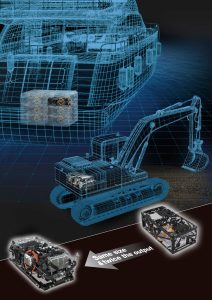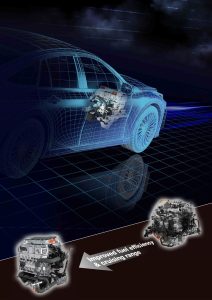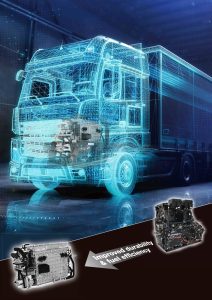Toyota develops new fuel cell system, contributing towards a future hydrogen society
Toyota Motor Corporation (Toyota) has announced development of a third generation fuel cell (FC) system as part of its continuing efforts towards realising a hydrogen society.
The all-new system is designed to meet the particular needs of the commercial sector, offering the same durability as conventional diesel-powered engines. It also delivers significant improvements in performance, including fuel efficiency, and a reduction in production costs compared to the second generation system.
Its use will be extended from passenger vehicles to include heavy-duty commercial vehicles. Market introduction, principally in Japan, Europe, North America and China, will be post-2026 at the earliest.
The third generation FC system was unveiled today at the H2 and FC EXPO in Tokyo.
Toyota views hydrogen as an important fuel in the pursuit of carbon neutrality. It is collaborating with partners across different industry sectors and has been promoting initiatives in the areas of Create, Transport, Store and Use hydrogen in relation to its R&D activities. Continuous evolution of FC technology is necessary to further accelerate its adoption to help achieve a hydrogen society. The third generation FC system represents a significant step-change in this process.
Third generation FC system background
Toyota launched Mirai, its first production fuel cell electric vehicle (FCEV) in 2014, since when it has sold approximately 28,000 units across more than 30 markets around the world. In 2019, the company began supplying FC systems for other applications, such as buses, trains and stationary power generators; more than 2,700 units have been delivered to more than 100 customers globally.
Toyota works with multiple partners to implement these systems in the commercial sector and help create a hydrogen society. The third generation FC system has been developed with the benefit of customer feedback and insights from proofs of concept and demonstration testing over several years.
Principal features
- Durability improved by up to two times that of the previous generation, now comparable to that of diesel engines.
- Maintenance-free design.
- Fuel efficiency improved by 1.2 times, increasing cruising range by 20%.
- Significant production cost reduction through innovations in FC design and manufacturing processes.
Expanded product line-up
The third generation FC system is suitable for installation in a variety of products, including commercial vehicles, passenger cars and general purpose applications such as stationary generators, trains and ships.
In passenger vehicles, the improved fuel efficiency provides an increase in cruising range, while for commercial vehicles the benefits include durability comparable to diesel engines and high power. The system’s more compact design means it can be more easily integrated into different commercial vehicles.
ENDS



